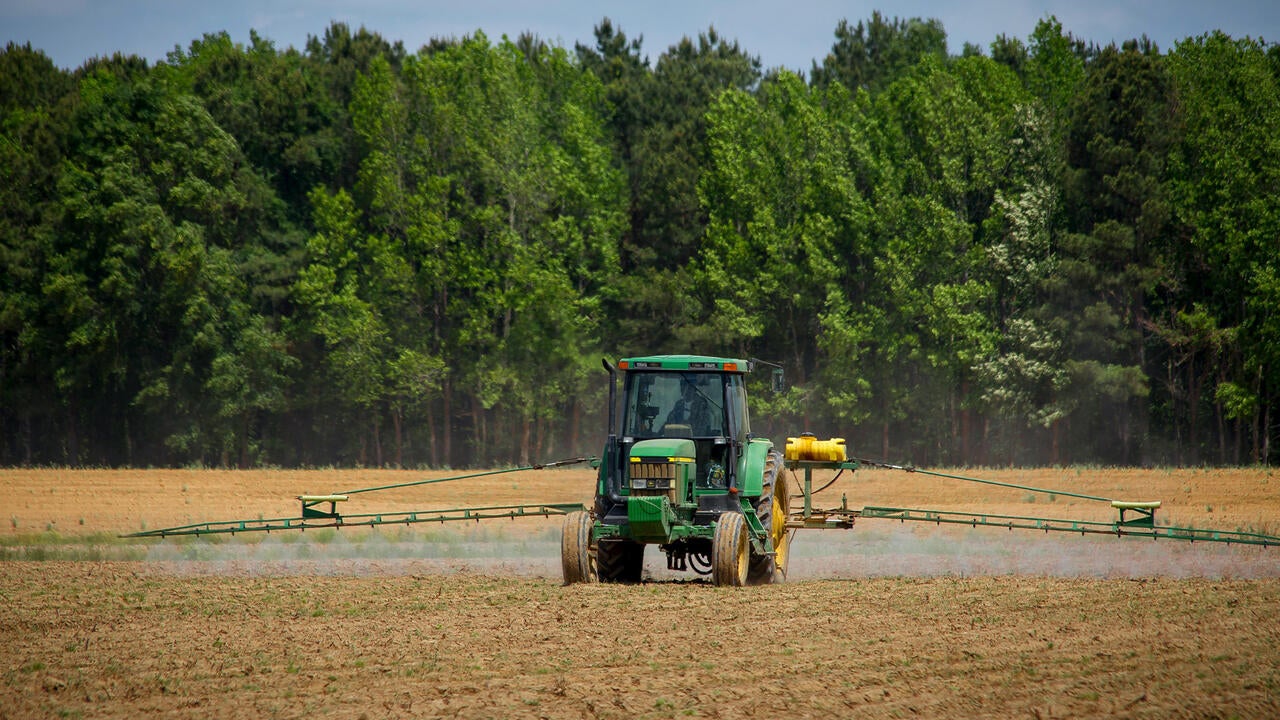
Sustainable farming practices vital for Ontario's environmental health
Farmers need support to adopt farm forests, windbreaks and riparian buffers as environmental best management practices

Farmers need support to adopt farm forests, windbreaks and riparian buffers as environmental best management practices
By Jordan Flemming University RelationsOntario's agricultural sector plays a significant role in the province's economy. In 2021, agriculture contributed nearly $10 billion to Ontario's GDP, employing 67,000 people directly and over 740,000 in related agri-food industries. However, the environmental impact of modern farming practices cannot be overlooked. Especially, large-scale industrial farming practices can contribute to soil erosion, water and air pollution and biodiversity loss.
And as climate change impacts continue to escalate, the imperative for sustainable farming practices becomes ever more pressing.
 Dr. Michael Drescher, a professor in the Faculty of Environment, advocates for the adoption of sustainable farming practices, particularly through the utilization of Environmental Best Management Practices (eBMPs).
Dr. Michael Drescher, a professor in the Faculty of Environment, advocates for the adoption of sustainable farming practices, particularly through the utilization of Environmental Best Management Practices (eBMPs).
Environmental Best Management Practices encompass a range of techniques aimed at reducing the adverse effects of agricultural operations on the natural environment. Amongst others, these practices include the establishment of farm forests, windbreaks and riparian buffers.
"Farm forests, resemble small woodlands and are often found at the back of farms,” Drescher explains. “Windbreaks, typically situated along farm margins or sometimes in the middle, are designed to slow down or break the stream of wind. Riparian buffers, made up of different vegetation types are adjacent to streams or ponds — these all offer various benefits including protecting soil and water quality and foster biodiversity.”
Despite the evident benefits of eBMPs, their widespread adoption among Ontario farmers remains limited. Many farmers are interested and keenly aware of the need for environmental protection. But factors such as financial and labour constraints, lack of awareness about support programs and land cover conversion pressures from urban expansion pose significant barriers to implementation and preservation of eBMPs.
However, there is hope on the horizon, as policymakers and agricultural experts are actively exploring strategies to overcome these challenges and promote the uptake of sustainable farming practices.
“We surveyed hundreds of farmers and interviewed dozens across the province to understand their needs for implementing eBMPs,” Drescher says. “Our findings revealed a critical need for support from conservation authorities and government to make these practices economically viable, as many farmers lacked the resources, both financially and in labour. Additionally, pressure from landowners to maximize land use often resulted in the removal of eBMPs.”
Drescher's recent policy brief, with research supported by the Ontario Ministry of Agriculture, Food and Rural Affairs, offers valuable insights into potential policy interventions to encourage the adoption of eBMPs by Ontario farmers.
These recommendations include:
Increase awareness: Efforts should be made to enhance farmers' knowledge about existing support programs for eBMPs. A centralized database of available resources and services could facilitate access to information and encourage uptake.
Incentivize adoption: Exploring payment-for-ecosystem services schemes could provide financial incentives for farmers to implement eBMPs, thereby aligning environmental conservation with economic benefits.
Support local initiatives: Strengthening local governmental and non-governmental organizations' capacity to assist farmers in implementing eBMPs can facilitate on-the-ground support and guidance.
Enhance regulation: Robust monitoring and enforcement of existing regulations are needed to prevent improper removal of eBMPs and safeguard environmental integrity. For example, municipalities should enforce their forest conservation by-laws to discourage landowners from inappropriate removal of eBMPs.

A windbreak is a row of trees or shrubs planted along fields to block winds to protect crops, minimize soil loss and create a better environment for farming.

A riparian buffer is a strip of vegetation along a water body that helps protect the water and surrounding land by filtering pollutants and preventing erosion.
Locally targeted policies and collaborative efforts between stakeholders are essential for achieving meaningful progress towards a more sustainable agricultural landscape.
The adoption of sustainable farming practices, particularly through the utilization of eBMPs, holds promise for safeguarding the province’s natural resources while ensuring the long-term economic viability of its agricultural sector.
Waterloo researchers have national partnerships and collaborations with governments and major industry leaders to find sustainable solutions. By adopting expert recommendations, Ontario can plant the seeds for a more sustainable and resilient future for its farmers and natural ecosystems alike.
Banner photo credit: Mark Stebnicki

Read more
University of Waterloo researchers will help Canadian municipalities monitor, measure and achieve climate mitigation goals

Read more
Opinion: Local governance is a key driver for increasing our global sustainability efforts

Read more
A generation-defining mission will develop satellite technology to help plan our responses to climate change
The University of Waterloo acknowledges that much of our work takes place on the traditional territory of the Neutral, Anishinaabeg, and Haudenosaunee peoples. Our main campus is situated on the Haldimand Tract, the land granted to the Six Nations that includes six miles on each side of the Grand River. Our active work toward reconciliation takes place across our campuses through research, learning, teaching, and community building, and is co-ordinated within the Office of Indigenous Relations.